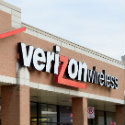
Verizon has not revealed how many 5G Home customers it has, but a "large number" of them are getting speeds in excess of the 300 Mbit/s minimum and about half of those customers are new to Verizon, company CFO Matt Ellis said.
Those were among the learnings that Verizon has come away with about six months into the initial, limited launch of 5G Home, its fixed wireless home broadband offering that uses the company's proprietary 5GTF transmission standard, Ellis said Tuesday at the Morgan Stanley Technology, Media & Telecom Conference in San Francisco.
He said 5G Home is exceeding that promoted minimum speed of 300 Mbit/s (Verizon is touting max speeds near 1 Gbit/s) despite the fact that Verizon isn't using all of the millimeter wave spectrum it has available at those locations. By way of comparison, T-Mobile said it is seeing speeds up to 500 Mbit/s in its millimeter wave 5G trials. (See T-Mobile Sees 500Mbit/s Speeds on Its 5G mmWave Spectrum.)
Among other new tidbits, Ellis claimed that the installation process for 5G Home has improved and that Verizon is working on a self-installation option after 5G Home is put on the global 5G standard.
5G Home customers can still opt for the "white glove treatment" as many broadband customers are still conditioned to expect pro installs. But the hope with self-installs is to remove truck rolls out of the equation and trim operations costs.
"We have to change the mindset," he said. "There will be a little bit of a transition here, but certainly [we] believe that self-install is the way of the future."
Ellis also tried to clarify some of the chatter about Verizon's 30 million-home buildout goal for 5G Home as the company prepares to flip that product over to the global 5G standard. (See Verizon Appears to Walk Back 5G Home Buildout Goal.)
"We can certainly get to that total addressable market in five to eight years," based on the first-generation technology and use of millimeter wave spectrum, Ellis said, referring to what CTO Kyle Malady mentioned last week at Verizon's investor relations event. "There's a number of factors that will impact exactly the speed at which the homes show up."
In addition to moving to the global 5G standard, the future version of 5G Home will eventually support other existing bands using dynamic spectrum allocation, Ellis added, likening it a bit to how 4G/LTE was deployed.
"The LTE network we have today is not the one we initially launched; it's far superior," he said. "As we go through the 5G evolution, you'll see 5G continue to improve and that will allow us to offer the service in ways we aren't today."
He also suggested that Verizon could accelerate the rollout by offering 5G Home in markets where a 300 Mbit/s minimum isn't required. But the total view of 5G Home's total addressable market hasn't changed, Ellis added, noting that more markets will be coming online in the second half of 2019. 5G Home is offered today in parts of Houston, Indianapolis, Los Angeles and Sacramento.
Ellis also offered a bigger picture view on when to expect 5G-related revenues to click. The consumer side of the business will see 5G sales start to scale up in 2020 (for both 5G Home and mobile 5G) and then provide a more meaningful contribution to revenue growth in 2021. On the business-to-business side, the mobile edge compute is geared up to launch later this year, with B2B-related revenues starting in 2021.
Related posts:
— Jeff Baumgartner, Senior Editor, Light Reading
About the Author(s)
You May Also Like



.jpg?width=300&auto=webp&quality=80&disable=upscale)








